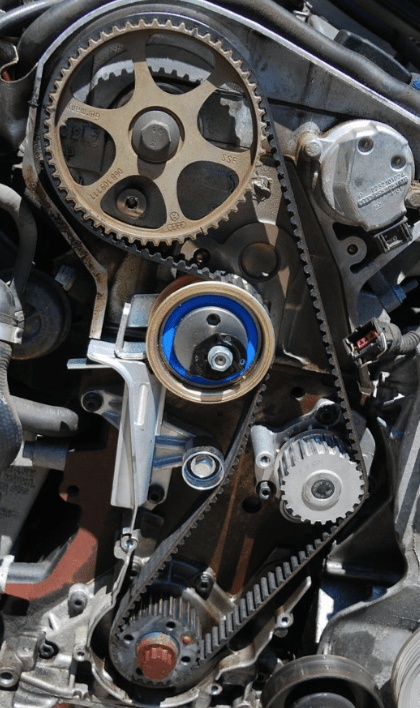

This allows automakers to reduce their production costs and pass the savings on to car buyers. A timing belt is significantly cheaper than a timing chain. One of the main reasons why most modern vehicles use a timing belt rather than a timing chain is because of the price. Typically, a timing belt has a higher maintenance cost than a timing chain, which may not need to be replaced. If you skip this procedure, the belt may snap and cause your engine to be totaled, which can set you back thousands of dollars. Nonetheless, it’s an essential part of auto maintenance. Replacing a timing belt can cost anywhere from $400 to $1,000 or more.

This means you need to change the belt two or three times over the lifetime of your vehicle. Still, it’s recommended that you get a new timing belt once every 60,000 to 100,000 miles, depending on your vehicle. However, unlike the easy-to-change serpentine belt, it’s located behind the timing belt cover, making it difficult to reach and replace. Timing BeltĪ timing belt is a rubber belt that’s similar to the serpentine belt in your vehicle. Let’s compare the advantages and disadvantages of a timing belt and a timing chain. Both of these timing components are equally capable of facilitating perfect engine timing, but they’re different in many ways. Nowadays, most vehicles roll off the assembly line with a timing belt, but some models still use a timing chain. What Are the Pros and Cons of a Timing Belt vs. Subsequently, major auto manufacturers began adopting this new invention for a number of reasons. This went on until 1940, when Pontiac released a revolutionary six-cylinder engine that came with a rubber strap rather than the classic chain. When the internal combustion engine appeared in the late 19th century, every automobile was equipped with a timing chain. The timing chain has a longer history than the timing belt. Bad timing can cause the engine to break down and damage the pistons, valves, and other components. Referred to as mechanical timing, the timing in these processes must be spot on to achieve and maintain optimal engine operation. The engine’s camshaft controls the valves to allow air and fuel to enter and exit, while the crankshaft is responsible for moving the pistons up and down.

To ensure a perfectly timed operation, the timing belt or timing chain works with the crankshaft and camshaft to keep the valves and pistons moving in synchrony. Image via Flickr by 3ndymion!!! | Licensed by CC BY-SA 2.0Įvery part of a car’s engine works in precise harmony to generate power in a smooth and steady manner.


 0 kommentar(er)
0 kommentar(er)
